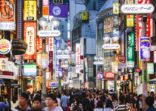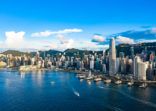Hong Kong-domiciled funds sold in the mainland via the MRF (northbound funds) had net inflows of RMB 976.3m ($141m) in April, according to data from the State Administration of Foreign Exchange (SAFE).
This is the third consecutive month that northbound funds saw net inflows, with net sales amounting to RMB 2.34bn since February.
The inflows come after mainland investors withdrew money from MRF funds for 14 consecutive months. For the full year 2018, net outflows totalled RMB 3.4bn.
Northbound fund net flows (RMB m)
| 2017 total inflows |
4,687.89 |
| 2018 total outflows |
(3,436.39) |
| January 2019 |
(883.83) |
| February 2019 |
75.51 |
| March 2019 |
1,336.48 |
| April 2019 |
976.34 |
| YTD inflows |
1,504.50 |
Source: SAFE
Similarly, qualified domestic institutional investor (QDII) products, which also offer mainland investors offshore exposure, had net inflows of around RMB 347m during the first quarter after seeing net outflows of $1.59bn in 2018, according to data from Morningstar Direct. The QDII scheme allows domestic fund managers to raise onshore money for offshore investments, within allocated quotas.
While global bond funds had the largest net outflows (RMB 6bn) in the QDII space last year, the category has now become the most popular among Chinese investors.
QDII funds net flows (1Q 2019, RMB m)
| Name |
YTD |
| QDII Global Bond |
1,490 |
| QDII Greater China Equity |
758 |
| QDII Asia-Pacific ex-Japan Equity |
165 |
| QDII Emerging Markets Allocation |
(7) |
| QDII Other |
(8) |
| QDII Emerging Markets Equity |
(9) |
| QDII Global Equity |
(20) |
| QDII Sector Equity |
(75) |
| QDII Asia Allocation |
(84) |
| QDII Commodities |
(168) |
| QDII Greater China Allocation |
(490) |
| QDII Global Allocation |
(509) |
| QDII US Equity |
(697) |
| Total |
347 |
Source: Morningstar Direct
Both the MRF and QDII data should be positive for foreign asset managers participating in the MRF scheme, especially for those firms that recently received approval from the China Securities Regulatory Commission (CSRC) to launch their products in the mainland, including those managed by HSBC Global Asset Management, JP Morgan Asset Management and Haitong International.
In total, there are 14 northbound funds under the MRF scheme and 16 more products that are still waiting to be approved, CSRC data shows.
Southbound funds
On the other hand, April had the highest net monthly outflows (RMB 79m) for southbound funds — China-domiciled funds sold in Hong Kong — since the programme started.
Southbound fund net flows (RMBm)
| 2017 total inflows |
239.83 |
| 2018 total inflows |
96.55 |
| January 2019 |
-3.47 |
| February 2019 |
6.01 |
| March 2019 |
12.14 |
| April 2019 |
-79.00 |
| YTD outflows | -64.3159 |
Source: SAFE
Since the MRF scheme started in 2015, net inflows for southbound products totalled RMB 368.3m, which compares to northbound inflows of RMB 10.53b, according to SAFE.
Separately, E Fund Management in China has become the latest to participate in the scheme. In April, the firm received a greenlight from the Securities and Futures Commission (SFC) to launch the E Fund China Bond 7-10 Year CDB Bond Index Fund in Hong Kong via the MRF, according to the regulator’s records.
It has been a while since the Hong Kong regulator approved a southbound MRF fund. The last was Yinhua Fund Management’s Credit Theme Jijihong Bond Fund, which received approval in July 2017.
The SFC has approved around 50 China-domiciled funds to be sold in Hong Kong. However, only two dozen funds have been made available for sale to investors, according to SFC records.
















